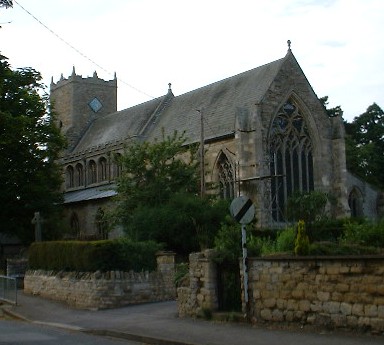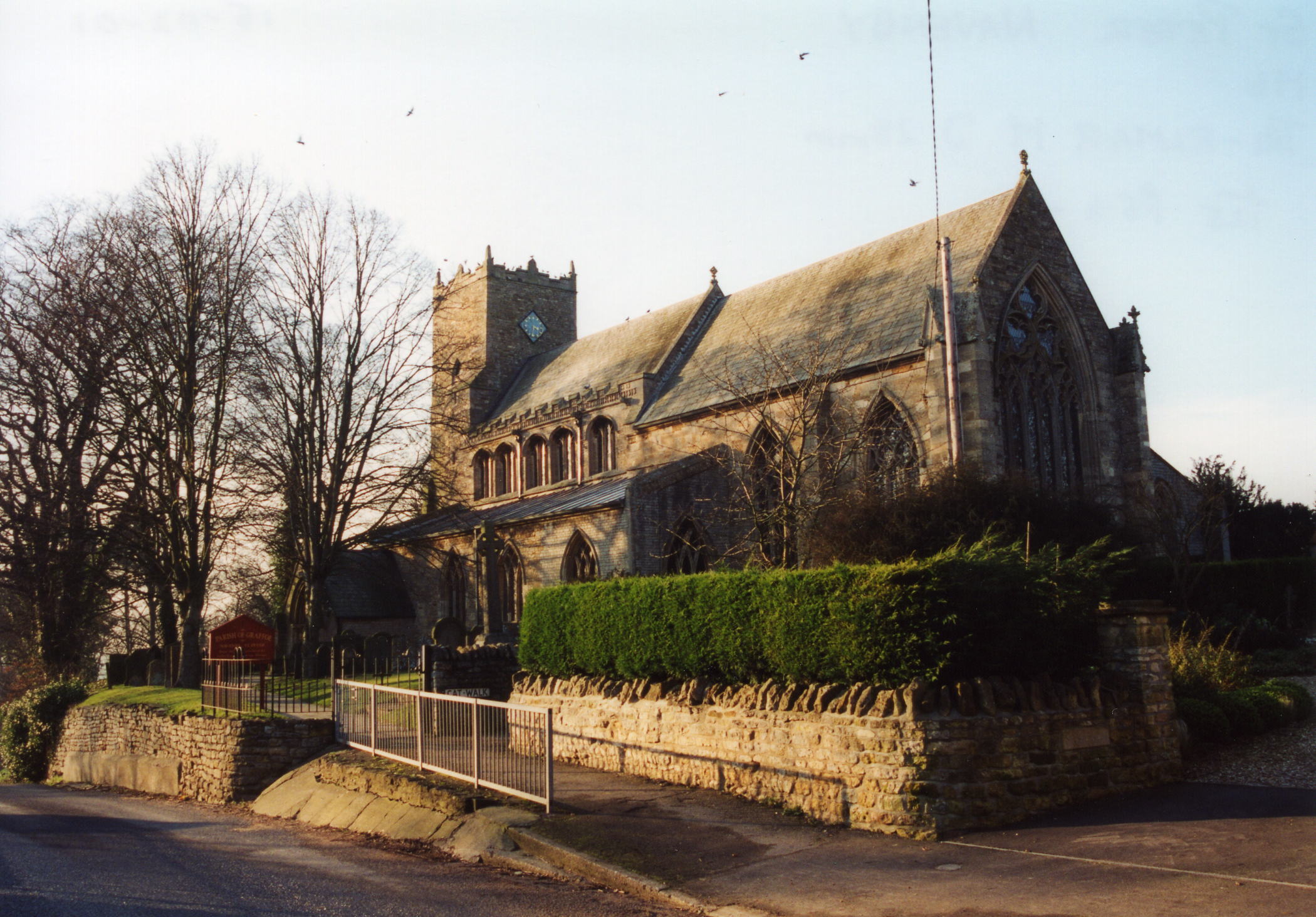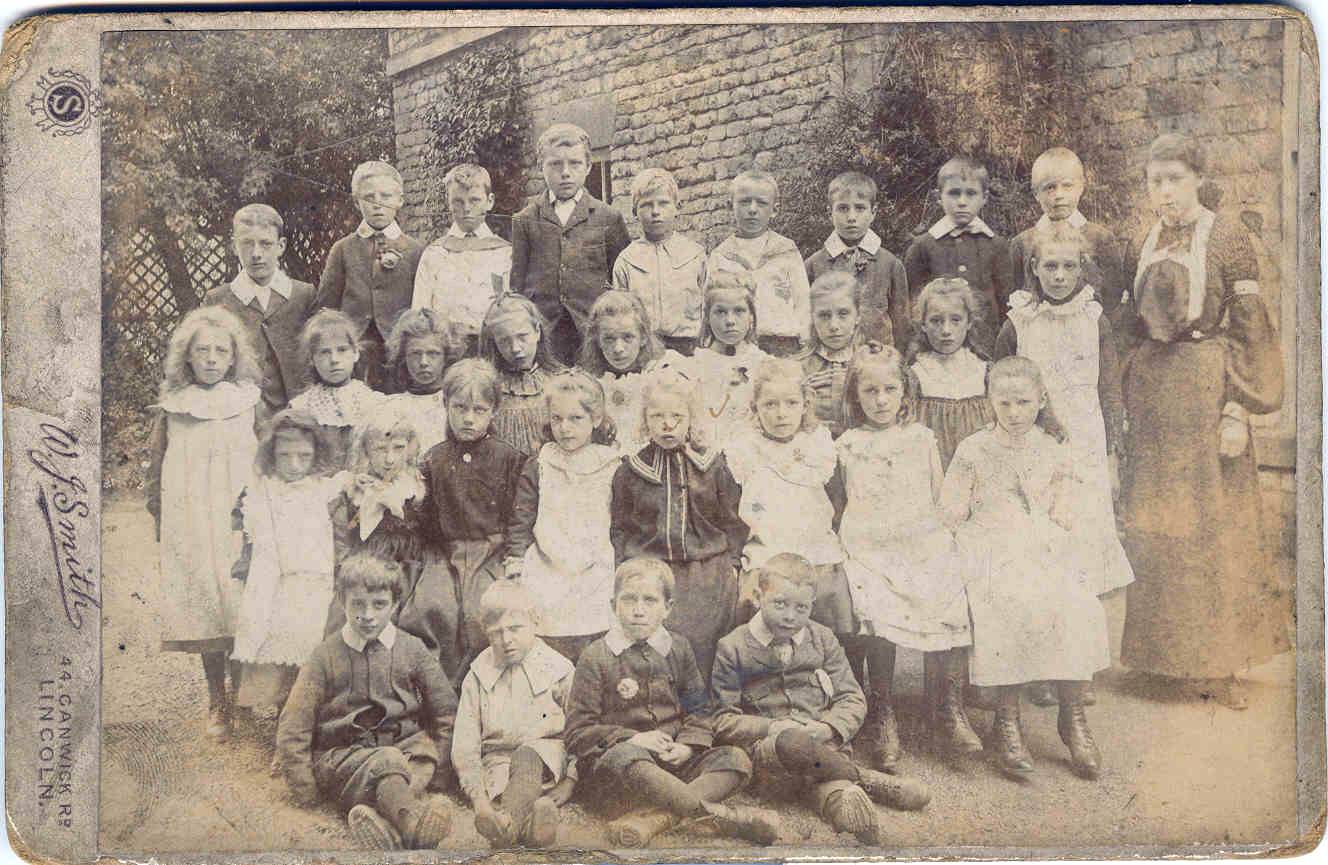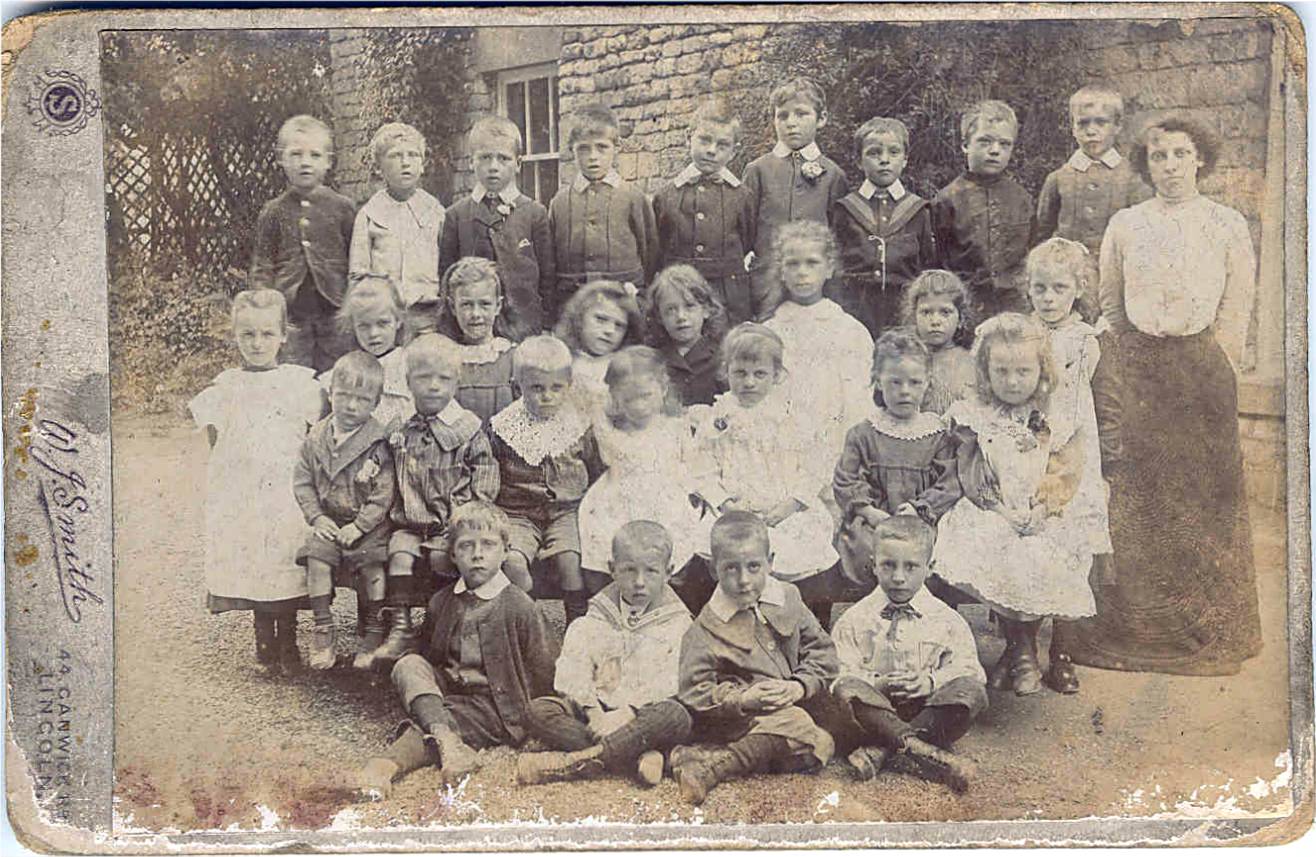Hide
Navenby
hide
Hide
hide
Hide
hide
Hide
Hide
hide
Hide
Hide
| St Peter, Navenby, Church of England |
| East Road, Navenby, Cemetery |
- The parish was in the South West sub-district of the Lincoln Registration District.
- Wendy PARKINSON has the Navenby 1861 census transcribed and online.
- The North Lincolnshire Library holds copies of the census returns for 1881.
- Check our Census Resource page for county-wide resources.
- The table below gives census piece numbers, where known:
| Census Year | Piece No. |
|---|---|
| 1841 | H.O. 107 / 621 |
| 1861 | R.G. 9 / 2354 |
| 1871 | R.G. 10 / 3364 |
| 1881 | R.G. 11 / 3235 |
| 1891 | R.G. 12 / 2587 |
- There is evidence that a Roman temple existed in the parish. There may also have been a Saxon church, but the location is unknown.
- The Anglican church is dedicated to Saint Peter.
- The church is built in a variety of styles. The original structure appears to be from the 13th century.
- The tower fell down in 1859 and restorations of the building continued into 1860.
- Restorations were done again in 1875/76.
- The church seats 300.
- The church is a Grade I listed building with British Heritage.
- Here is a photo of Saint Peter's church, taken by (and copyright of) Wendy PARKINSON).

- Here is a photo of the Church of St. Peter taken by Ron COLE (who retains the copyright):

- Parish registers exist from 1681.
- The Family History Library has the Bishop's transcripts from 1562 to 1849.
- There are a few marriage entries in our Navenby Register Extract page. It is not a complete transcription of the register, so always check the original.
- Parish registers are on file at the Society of Genealogists, covering 1562 - 1837.
- Parish marriages are in Boyd's Marriage Index, covering 1562 - 1837 and Pallot's Marriage Index, covering 1790 - 1837.
- The LFHS has published several indexes (marriage and burial) for the Graffoe Deanery to make your search easier.
- A small Wesleyan Methodist chapel was established about 1830 and completely rebuilt in 1840. The Wesleyan Reformers also met in Navenby in the Temperance Hall, built in 1852. For information and assistance in researching these chapels, see our non-conformist religions page.
- Check our Church Records page for county-wide resources.
- The parish was in the South West sub-district of the Lincoln Registration District.
- Check our Civil Registration page for sources and background on Civil Registration which began in July, 1837.
Navenby is both an ancient village and parish. The parish stradles the old Roman Ermine Street between Boothby Graffoe parish and Wellingore parish, and lies 124 miles north of London, about 8 miles south of the city of Lincoln and 10 miles NW of Sleaford. The parish is elongated in an east-west direction, extending east to the Lincoln Heath and west to the River Brant. The size of the parish has varied over the last two centuries. In 1821 it covered 2,110 acres; in 1951 it was 3,345 acres.
Navenby village lies in the eastern end of the parish. If you are planning a visit:
- By atuomobile, the A607 trunk road passes through the village as it rambles north out of Leadenham on its way to Lincoln. Navenby can also be reached off the A15 motorway north out of Sleaford.
- There used to be passenger rail service back in 1867 for your ancestors, but the railway ceased operations in 1962.
- Click here for a Lincolnshire Heritage Trust and enter Navenby in the Search box.
- Visit our touring page for more sources.
- Ask for a calculation of the distance from Navenby to another place.
- A Bronze Age cemetery has been found at Navenby as well as an Iron Age settlement. The Romans are reported to have had a small base or garrison at Navenby.
- The ancient Market Town of Navenby had grants from Edward the Confessor, William Rufus and Richard II.
- At one time the town square had a market cross in honour of Queen Eleanor, now long since removed.
- A Sick Society was founded in 1811. A Temperance Hall was erected in 1852.
- The Volunteer Fire Brigade was established in 1844, consisting of five men and a manual engine.
- The Provincial Gas Light & Coke Co. supplied gas lighting to the village in 1857. This firm later became the Navenby & Wellingore Gas Light & Coke Co. Limited.
- Navenby used to celebrate two annual fairs, one held on October 17th for farm animals and the other a feast on the Thursday before Easter.
- The village held a Hiring Fair for servants on May Day.
- The parish had a station three-quarters of a mile west of the village on the Lincoln to Grantham branch of the Great Northern Railway.
- In 1871, the Dean and Chapter of Lincoln was the principal landowner and lord of the manor. Most tenants leased their land for 21 years, renewable every seven years.
- The Lion Public House was the spot to go for local news and gossip. It changed its name to "The Lion and Royal" after a visit by the Prince of Wales (Later Edward VII) in 1870. It is still open.
- The parish had a Green Man Pub, but the webpage author could find no record of it, except for the street named "Green Man", It is now a private house.
- The Butcher's Arms Public House at 69 High street was a good spot to find neighbors and friends. It was converted into a private house after 1930. These are the names associated with the place in various directories:
Year Person 1842 -- not listed -- 1881 George CLARKE 1882 -- not listed -- 1913 -- not listed -- 1919 Herbert GANNER 1930 Abe BECKHAM
- The Chaplain's Arms Public House was William JOHNSON's place in 1882. It apparently closed with his death.
- The Great Northern Hotel was was associated with the railroad. These are the names associated with the place in various directories:
Year Person 1842 -- not listed -- 1872 William SINGLETON, vict. 1882 Jesse HARRISON, vict. 1913 John BRISTOW 1919 John BRISTOW 1919 John BRISTOW 1930 Geo. H. BROWN
There appear to be no guests at the GNR Hotel in 1881. Here is the census entry (RG 11/3235 folio 23):
Relationship Name Sex Age Where born Head Jesse HARRISON M 29 Boothby Graffoe, Lincolnshire wife Mary A. HARRISON F 34 Navenby, Lincolnshire stepson George W. BARRAND M 8 America stepdaugh. Gertrude E. BARRAND F 5 America stepdaugh. Florence M. BARRAND F 2 Navenby, Lincolnshire daughter Ada M. HARRISON F 0 Navenby, Lincolnshire servant Elizabeth HUTCHINSON F 13 Harmston, Lincolnshire
- The King's Head Public House is a 18th century Grade II listed building with British Heritage.
- The King's Head Public House was another conversation spot. These are the names associated with the place in various directories:
Year Person 1842 John CODDINGTON, vict. 1861 William ARMSTEAD 1868 Joseph ARMSTEAD 1872 Henry KISHY, brickmaker 1882 George CLARKE 1913 John GOODHEAD 1919 Charles HANDFORD 1930 Thomas George WOODWARD
And only one lodger at the King's Head in 1881. Here is the census entry (RG 11/3235 folio 4):
Relationship Name Sex Age Where born Head George CLARKE M 62 Wold Newton, Lincolnshire wife Hannah CLARKE F 54 Navenby, Lincolnshire son Robert CLARKE M 33 Navenby, Lincolnshire son Tom CLARKE M 21 Navenby, Lincolnshire daugh. Sophy CLARKE F 16 Navenby, Lincolnshire son Henry CLARKE M 14 Navenby, Lincolnshire son Andrew CLARKE M 12 Navenby, Lincolnshire lodger John PALIN M 52 Welbourne, Lincolnshire
- The Lion Public House (often listed as a hotel) was the spot to go for local news and gossip since it opened in 1824. It is also a Grade II listed building with British Heritage. It changed its name to "The Lion and Royal" after a visit by the Prince of Wales (Later Edward VII) in 1870. It is still operating.
- Trevor RICKARD has taken a picture of the The Lion & Royal and put it on Geo-graph. Names and years are:
Year Person 1842 -- not listed -- 1868 William GODBEHERE 1872 Wm. Woolfit GODBEHERE, brewer 1882 William Woolfitt GODBEHERE, vict. 1913 Frank MILNER 1919 Tom FISHER 1930 Wm. FISHER
- The Reindeer Public House at 10 High street was was also well known. It has since become a fish and chips shop. These are the names associated with the place in various directories:
Year Person 1842 John Rose CHERRY, vict. 1861 John POOLE 1868 George CLARKE 1872 James LINNELL, vict. 1882 John NELSON, vict. 1913 William PILSWORTH 1919 William PILSWORTH 1930 William MARSTON
John NELSON was born in Branston, LIN, circa 1843. His wife Emma (nee ALLETT) was born in Heighington, LIN, circa 1847.
- Dave BEVIS has taken a picture of the Old Manor House and put it on Geo-graph for all to see.
- See our Maps page for additional resources.
You can see maps centred on OS grid reference SK989576 (Lat/Lon: 53.106856, -0.523911), Navenby which are provided by:
- OpenStreetMap
- Google Maps
- StreetMap (Current Ordnance Survey maps)
- Bing (was Multimap)
- Old Maps Online
- National Library of Scotland (Old Ordnance Survey maps)
- Vision of Britain (Click "Historical units & statistics" for administrative areas.)
- English Jurisdictions in 1851 (Unfortunately the LDS have removed the facility to enable us to specify a starting location, you will need to search yourself on their map.)
- Magic (Geographic information) (Click + on map if it doesn't show)
- GeoHack (Links to on-line maps and location specific services.)
- All places within the same township/parish shown on an Openstreetmap map.
- Nearby townships/parishes shown on an Openstreetmap map.
- Nearby places shown on an Openstreetmap map.
- During the Great War, the Royal Flying Corps established an airfield on land bordering Navenby (in Wellingore parish). The field was also used by the Royal Naval Air Service.
- The field closed after the war, but re-opened in 1935 and expanded in 1939-40. By then it had become officially RAF Wellingore.
- The field closed again in 1945, but was used as a camp for prisoners of war for a few years afterward.
- The War Memorial in the churchyard is a granite celtic cross erected by the parishioners in 1921 in memory of the men who fell in the Great War.
For a photograph of the Navenby War Memorial and the names on it, see the Roll of Honour site.
- The Saxon name for Navenby has not survived, but the current name derives from the Old Scandinavian Nafni+by, which means "farmstead or village of a man called Nafni". In the 1086 Domesday Book, the name is similar to today's name and appears as Navenebi.
["A Dictionary of English Place-Names," A. D. Mills, Oxford University Press, 1991]
- This place was an ancient parish in Lincolnshire and became a modern Civil Parish when those were established.
- The parish was in the Higher division of the ancient Boothby Graffoe Wapentake in the North Kesteven division of the county, in the parts of Kesteven.
- For today's district governance, see the North Kesteven District Council.
- The Common Lands were enclosed here in 1772.
- Care of the poor dates back to at least 1772 when part of the parish was enclosed. There appears to have been prior donations by DARWIN and DAUBNEY, but these are undated.
- Some time after 1772 a workhouse was erected, but later given over to other uses.
- As a result of the 1834 Poor Law Amendment Act, the parish became part of the Lincoln Poor Law Union.
- Bastardy cases would be heard in the Lincoln South petty session hearings.
Year Inhabitants 1801 479 1811 542 1821 625 1831 778 1841 942 1851 1,057 1871 1,000 1881 957 1891 803 1901 779 1911 796 1921 824 1951 851 1971 938
- The Parish School was built here by subscription in 1816 with one room for boys and a second room for girls. Although built for 220 students, average attendance was about 100. The current Primary School is on East Road in Navenby, with about 156 students aged 4 to 11.
- For more on researching school records, see our Schools Research page.
- Here are two undated photographs of two classes from the school. The date is presumed to be from the late 1800s. These were contributed by Denis Fluck, born in Hales House.


